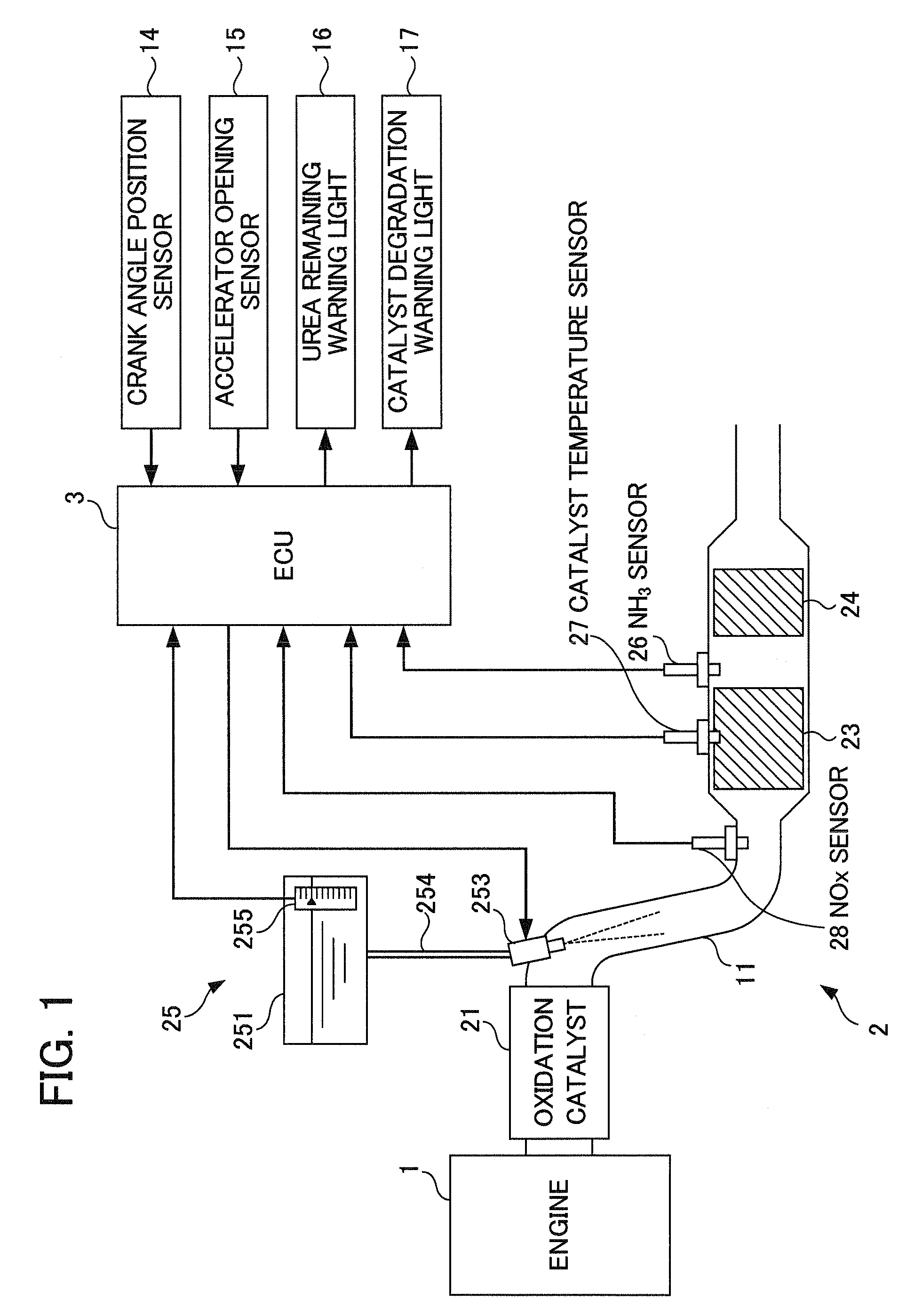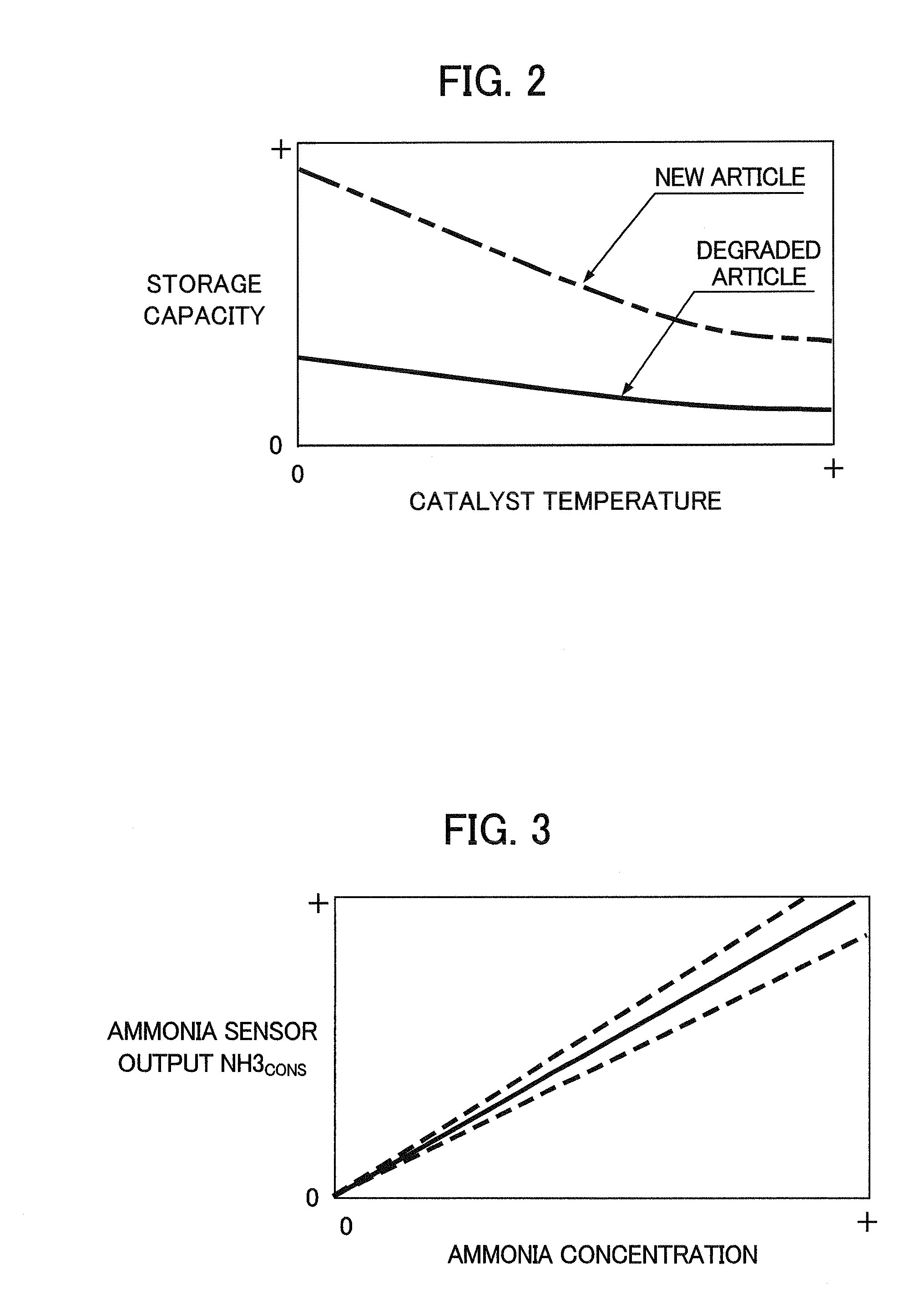Exhaust purification system for internal combustion engine
a technology for exhaust purification systems and internal combustion engines, which is applied to engine components, machines/engines, mechanical equipment, etc., can solve the problems of variable purification performance between individual units and difficulty in optimal control of urea water injection
- Summary
- Abstract
- Description
- Claims
- Application Information
AI Technical Summary
Benefits of technology
Problems solved by technology
Method used
Image
Examples
case 1
[0190 is considered to be a state in which the error of the control system is the smallest, since the selective reduction catalyst is a new article and there is also no gain variation of the ammonia sensor. Therefore, although ammonia slip by the selective reduction catalyst occurs with the operating state of the engine becoming high load, ammonia discharged to outside the system amounts to nothing. In addition, since the actual storage amount is controlled to near the actual storage capacity apart for the duration in which the storage capacity is temporarily increased from low load operation being performed intermittently, the NOx purification rate of the selective reduction catalyst is also maintained to be high.
[0191]Moreover, the storage capacity correction value KVNS is maintained at “1”, a result of which the error in the estimated value STUREA—MAX of the storage capacity relative to the actual storage capacity is also small. This fact is consistent with using a selective redu...
case 4
[0198 is a state in which gain variation in the ammonia sensor occurs and the selective reduction catalyst has degraded, and is considered to be the state in which the error of the control system is the largest. However, since the output value of the ammonia sensor is used as binary information, the effect of there being gain variation in the ammonia sensor is small. Therefore, the simulation results of CASE 4 are substantially the same as the simulation results of CASE 3. Therefore, it has been verified that, according to the present embodiment, it has robustness against gain variation of the ammonia sensor and degradation of the selective reduction catalyst.
[0199]According to the present embodiment, there are the following effects.
[0200](1) The reference injection amount GUREA—BS is calculated based on a parameter (engine revolution speed NE, load parameter TRQ) correlating to the operating state of the engine. The urea injection amount GUREA is decided by decreasing in amount, re...
PUM
 Login to View More
Login to View More Abstract
Description
Claims
Application Information
 Login to View More
Login to View More - R&D
- Intellectual Property
- Life Sciences
- Materials
- Tech Scout
- Unparalleled Data Quality
- Higher Quality Content
- 60% Fewer Hallucinations
Browse by: Latest US Patents, China's latest patents, Technical Efficacy Thesaurus, Application Domain, Technology Topic, Popular Technical Reports.
© 2025 PatSnap. All rights reserved.Legal|Privacy policy|Modern Slavery Act Transparency Statement|Sitemap|About US| Contact US: help@patsnap.com



